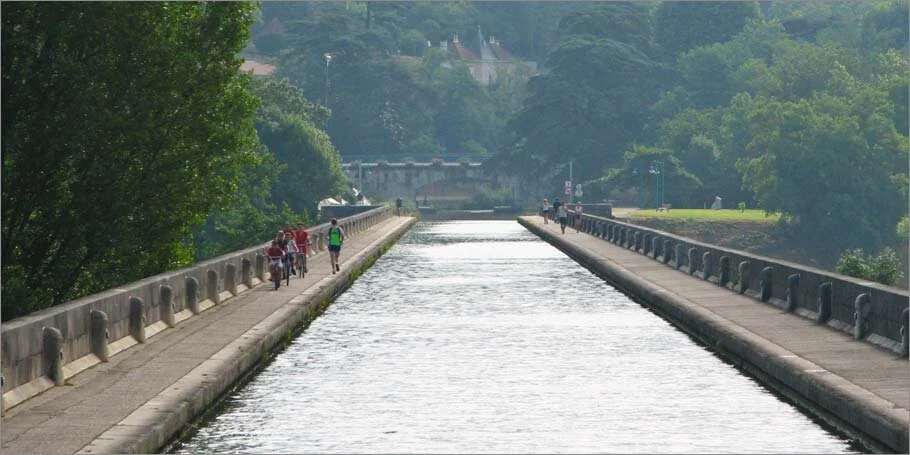
Villages to visit
Labarthe Chambre d’Hote and Gite is located in the top corner of Lot et Garonne (47), a region split into five territories: Coeur de Bastides / Vallée du Lot - runs from Fumel to Aiguillon / L’Agenais / L'Albret / Val de Garonne Guyenne Gascogne - see below for a short description of these areas.
The Gironde and Dordogne border is just a few minutes away giving you more villages with different architecture and terrain to explore and enjoy. A few of our favorites are listed below, but we have included some useful websites links for you to build your own road trip!
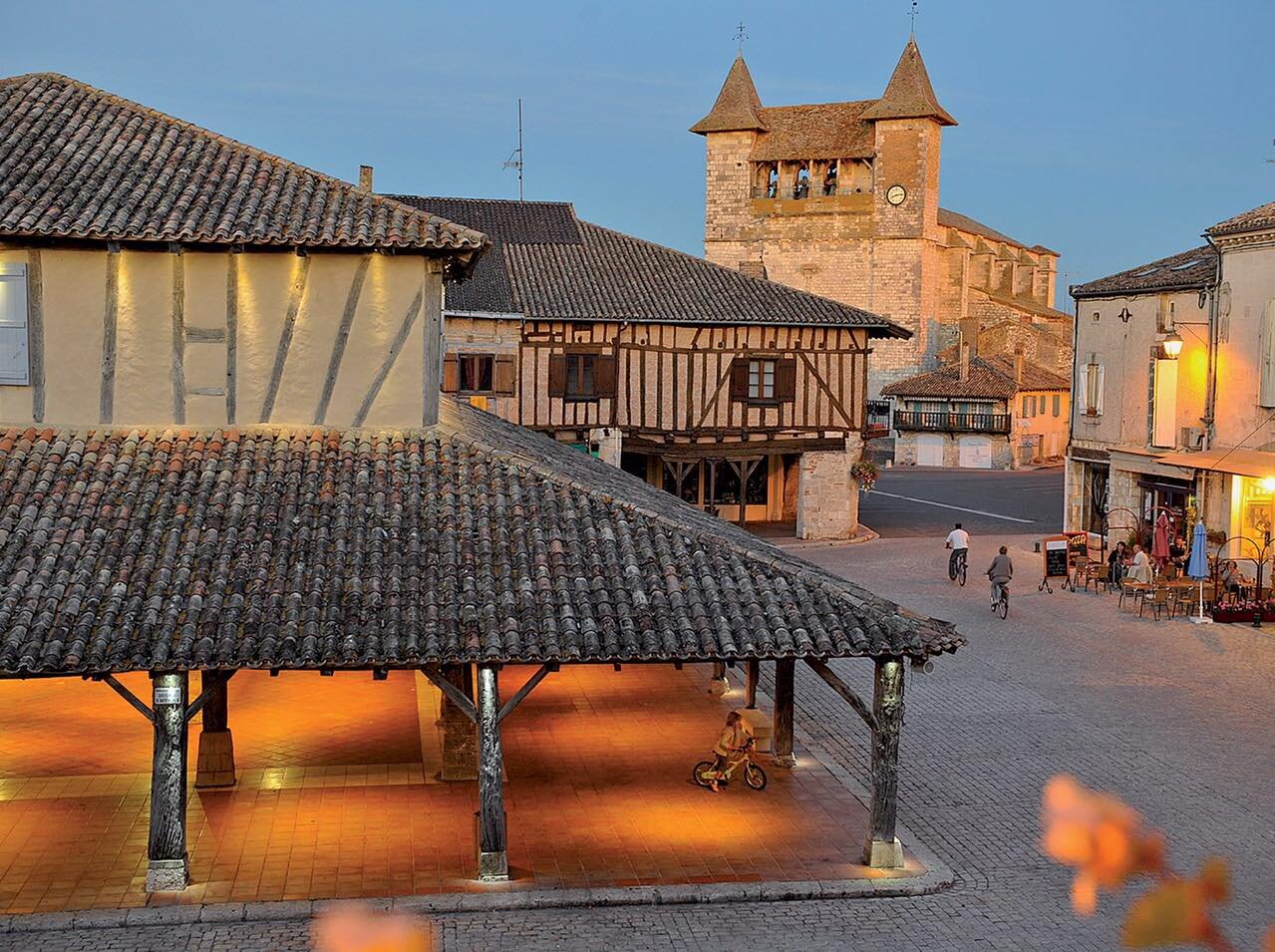
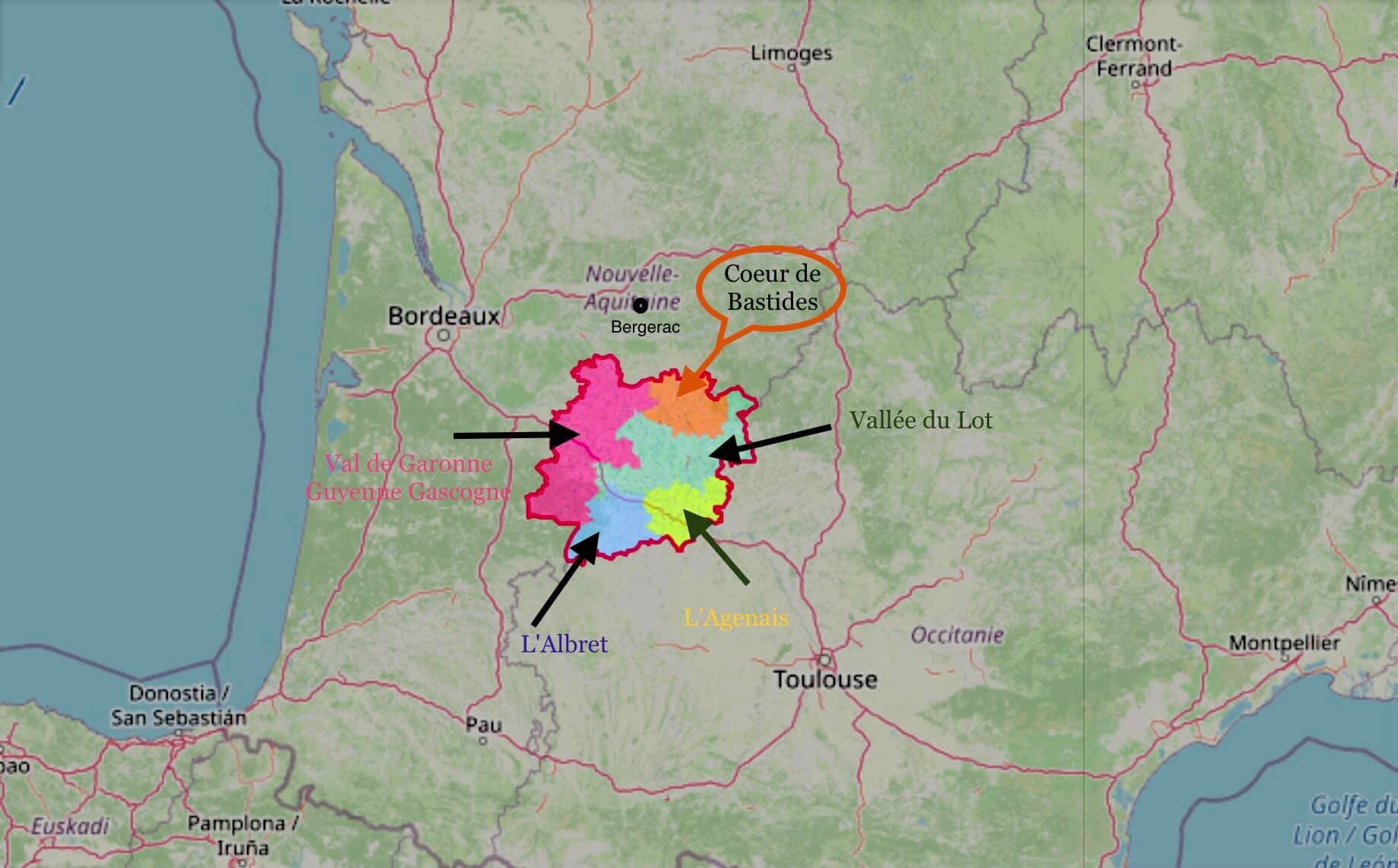
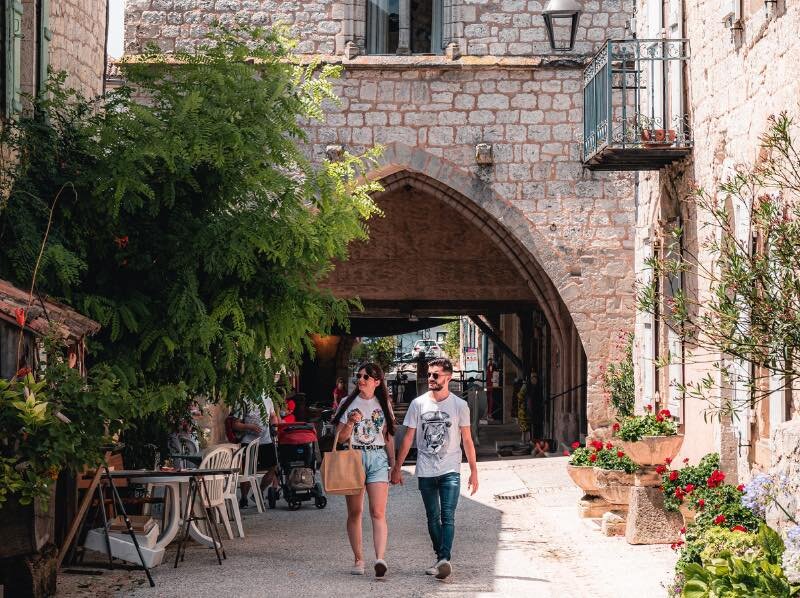
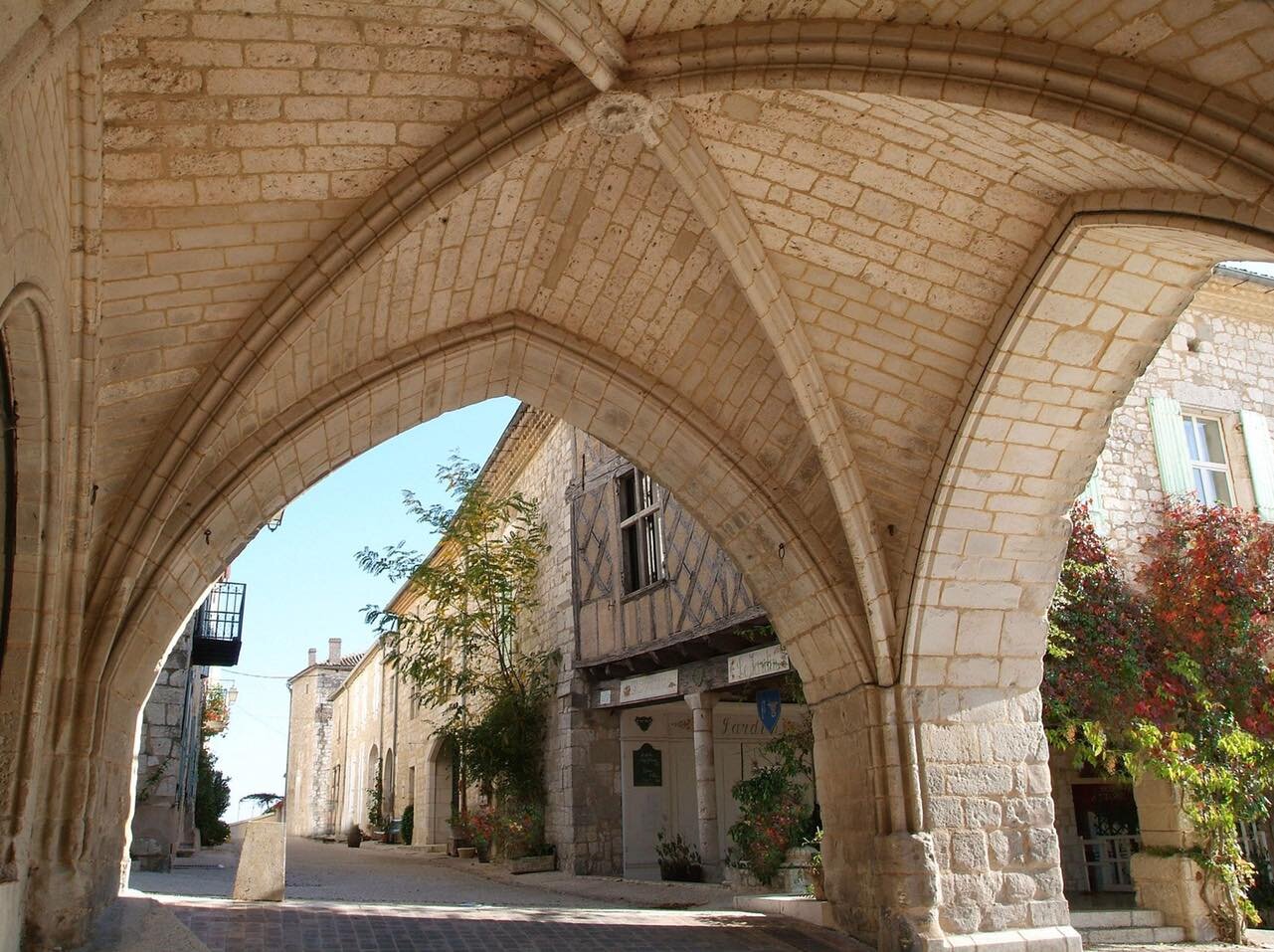
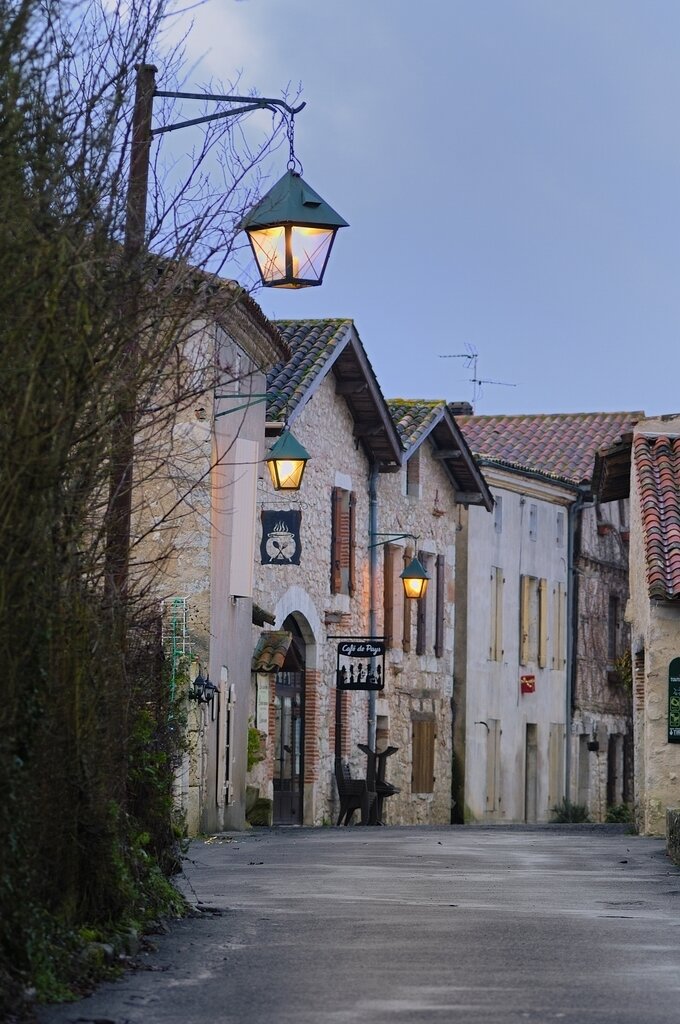
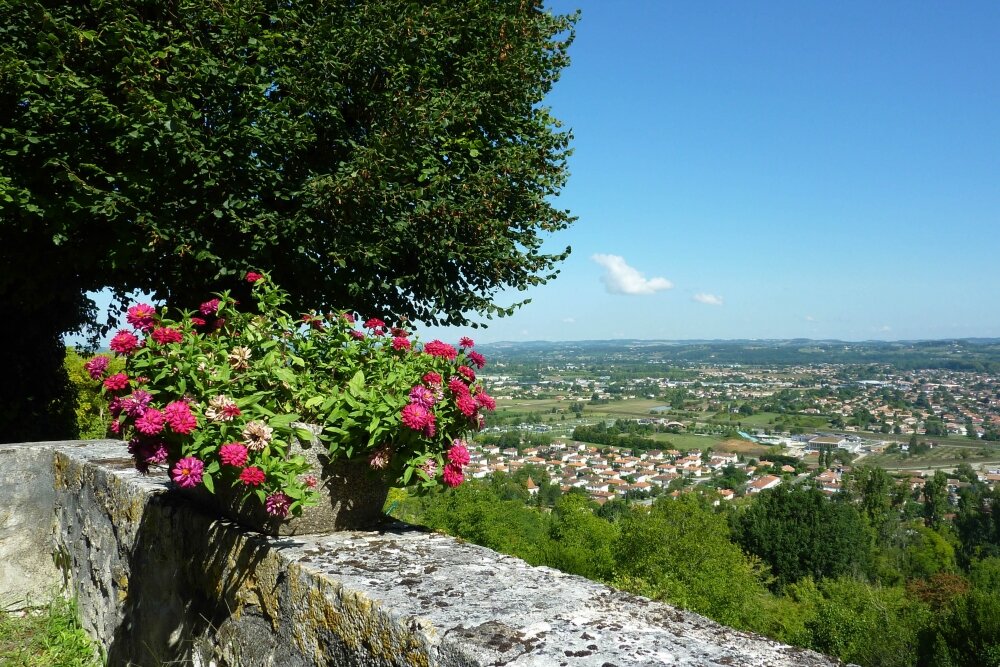
Coeur de Bastides
Coeur de Bastides borders the south Dordogne(24) and the Lot (46), an area steeped in history with too many towns to mention but to give you a taste of this territory I will start with Villereal.
A Bastide town we first came across over ten years ago on one of our last holidays in France before making the move. It rained the full two weeks! 😆 Having been back here numerous times I can assure you it was definitely a blip in the weather! Villeréal, built in the 13th century, named the "city of the king" of France which imposed its right here against the English of Aquitaine, and you can still see still its medieval buildings: half-timbered houses, corbelled houses, and old-style enclosed gardens. Its large central square with a vastly proportioned covered market with an extremely rare one-story mud floor and its fortified 13th century church, set back from the centre dedicated to trade. The bastide is very much alive and hosts many events, markets, exhibitions, brocantes (every second Sunday of the month), concerts, bodegas, and horse races.
In the heart of the bastide town of Monflanquin, another 13th century Bastide town, the arcades surround the market square. Outside the square, the church was built and rebuilt 3 times, the last time in the 19th century. The present bell tower was completed in 1923. A network of carrérots (pedestrian streets) runs through the town and all the streets are lined with stone, brick and half-timbered houses dating from the 13th century.
A tale of two Pujols - Indeed, we have a Pujols to the east in Lot et Garonne, and to the west in the Gironde. Both medieval villages with their own story, and both 40 minutes from Labarthe. Pujols, Lot et Garonne, is close to and overlooking, Villeneuve sur Lot. This once fortified town is a charming place to wander around with narrow streets overlooked by beautiful houses, an old well, fortified gates, Saint-Nicolas and Sainte-Foy churches, a covered market hall where a local produce market takes place on Sunday mornings from May to September, and a panoramic view of the Lot Valley. As well as being home to some listed 15th-century frescoes, Sainte-Foy church holds regular art exhibitions. A chocolate box village so don’t forget your camera!

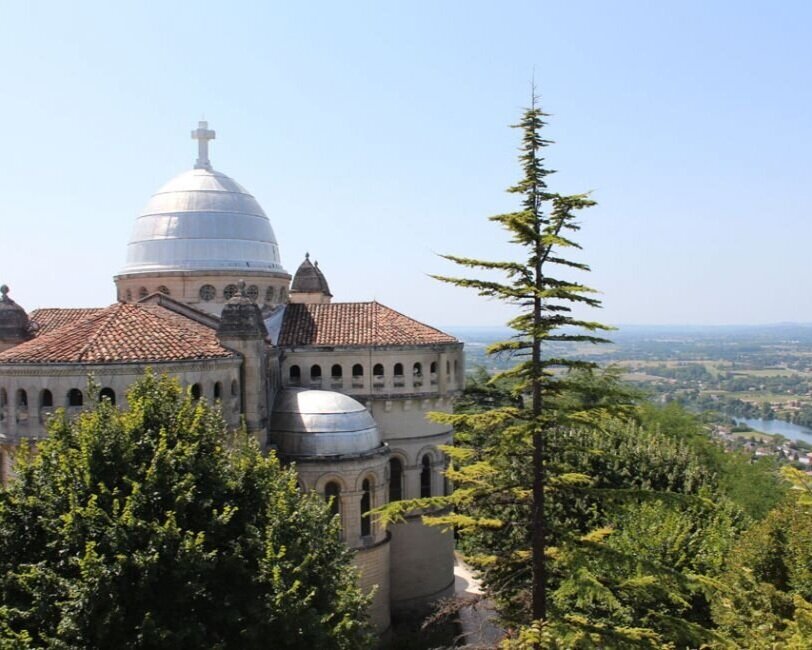
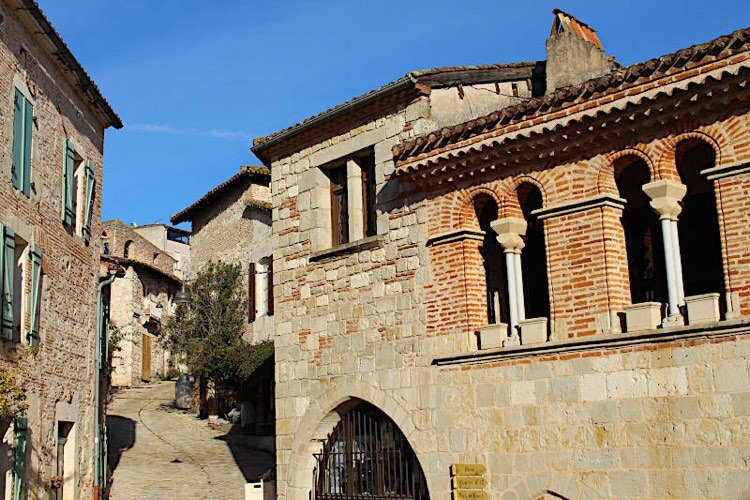
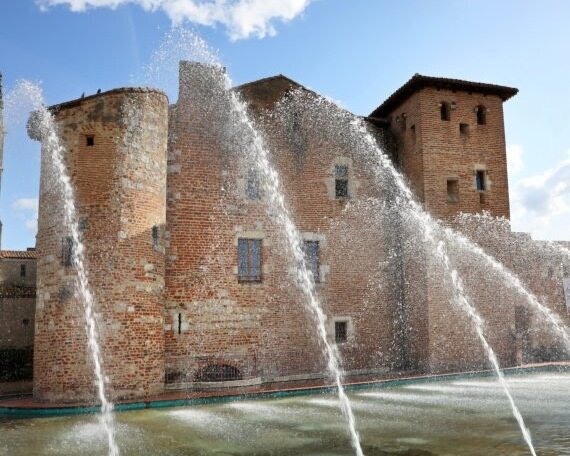
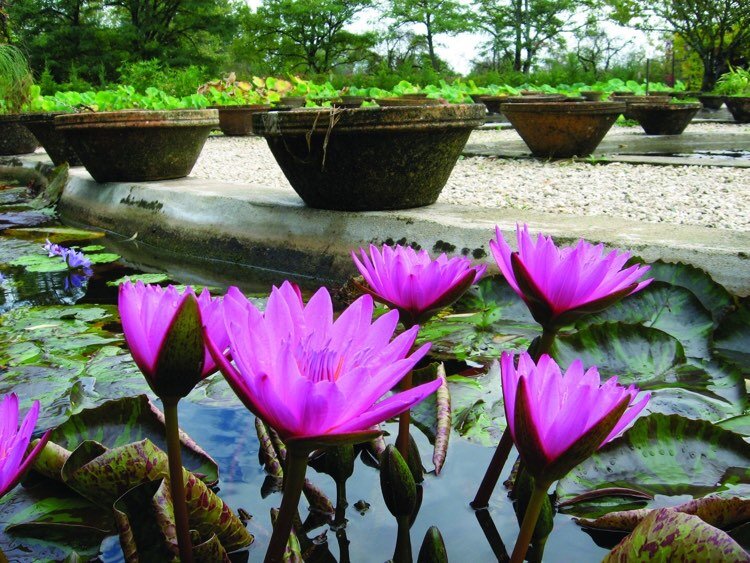
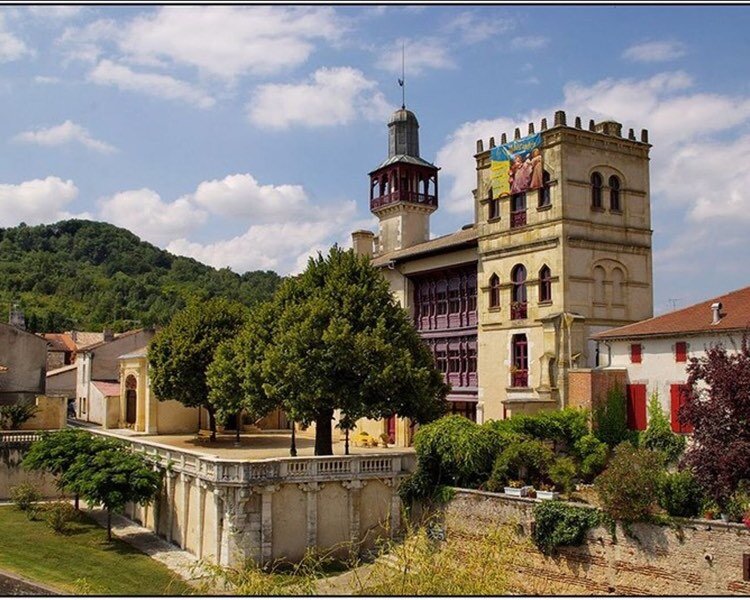
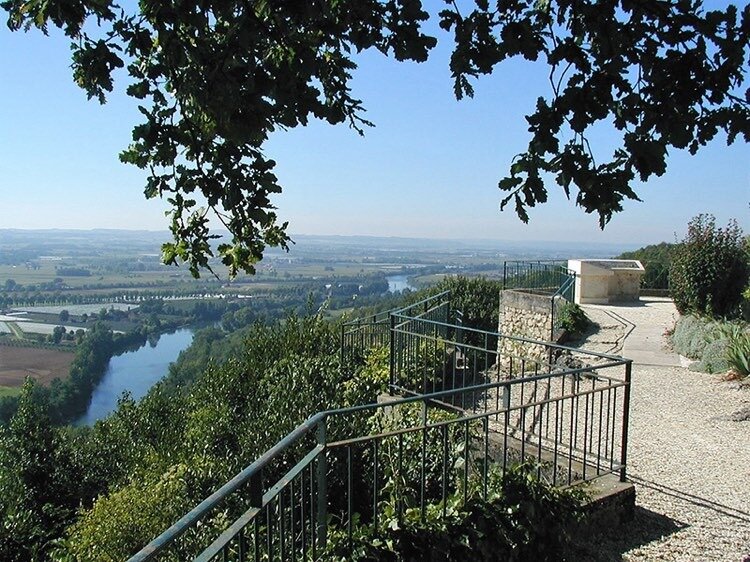
La Vallee du Lot
Chateau Boneguil is listed as one of the most spectacular medieval castles I’ve seen so far. The Castle was built in the 13th, 15th, 16th and 18th centuries, and classified as a Historic Monument. Tours are available or you can meander the castle on your own. There are many organised activities including workshops, treasure hunts, theatrical nocturnes, medieval theatre, and a musical festival.
In Penne d’Agenais you will find the oldest chapel in the country, built in the year 1000 by a family of knights. The chapel was destroyed many times during the Wars of Religion, but in the 17th century the chapel was rebuilt once more. From this neo-Romanesque Byzantine style sanctuary, there is an amazing panorama of the town and the Lot valley. You will see lots of attractive houses and buildings in the centre, and craft workshops and art galleries can be explored along the steep streets.
A few kilometres takes you into the city of Villeneuve-sun-Lot, one of the oldest fortified grid-plan towns (bastides) in SW France. Built by the River Lot there is much to explore.
Follow the river west to discover a cluster of villages river beaches to relax by. Le Temple-sur-Lot, a site chosen by the Knights Templar to build an impressive commander’s residence back in the 13th century, now home to a restaurant. Next to this impressive building is the water lily garden “Latour Marciac”, the oldest aquatic plant nursery in the world. The nursery was founded in 1875 by Joseph Bory Latour-Marliac for the propagation, cultivation and commercialization of hardy water lilies. In 1889 he took his significant collection to exhibit in Paris and won first prize. But more importantly, his collection caught the eye Claude Monet. Soon afterwards, Monet started to build his water garden in Giverny, and ordered a quantity of water lilies from Latour-Marliac. It was these lilies that became the subject of his famous paintings, Les Nympheas
Castelmoron grew up around its castle as early as the 13th century. It conceals amazing architecture, notably the Château Solar, its neo-Moorish architecture included many wooden structures: galleries, balconies and moucharabiehs. It was bought in 1902 to become the town hall.
Final stop is Laparade to take in the wonderful panoramic view, from Villeneuve sur Lot to the meeting of rivers Lot and the Garonne and to the Pyrenees opposite on a very clear day ...
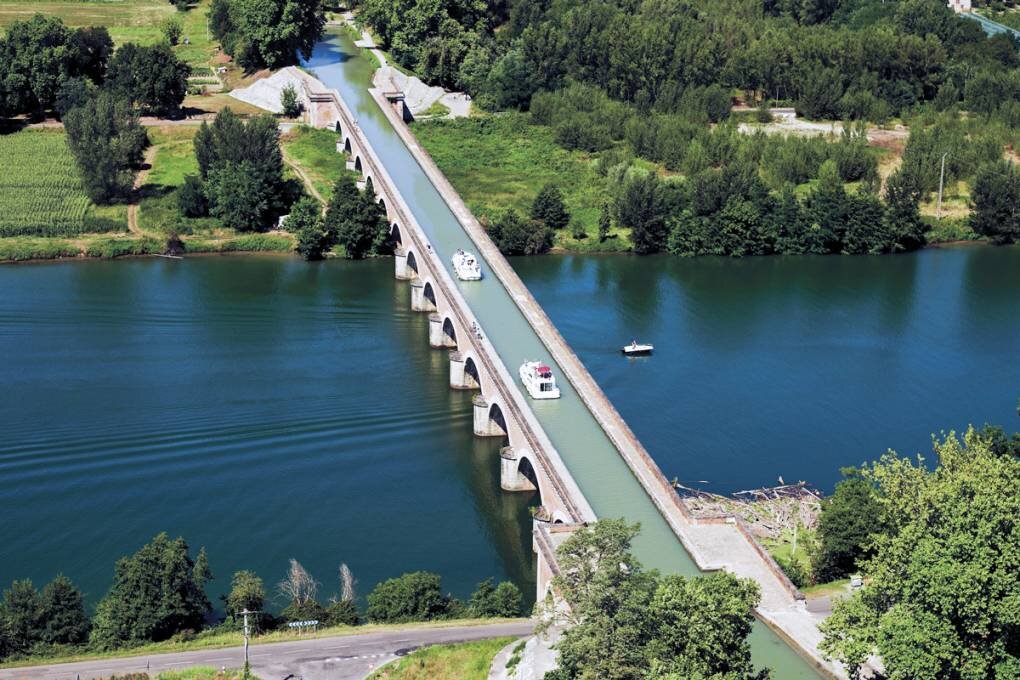
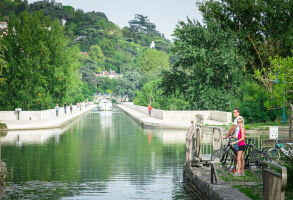
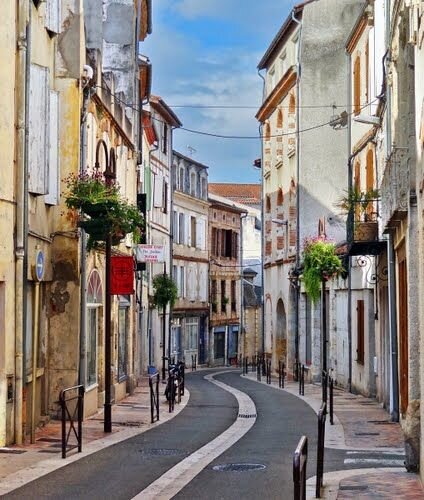
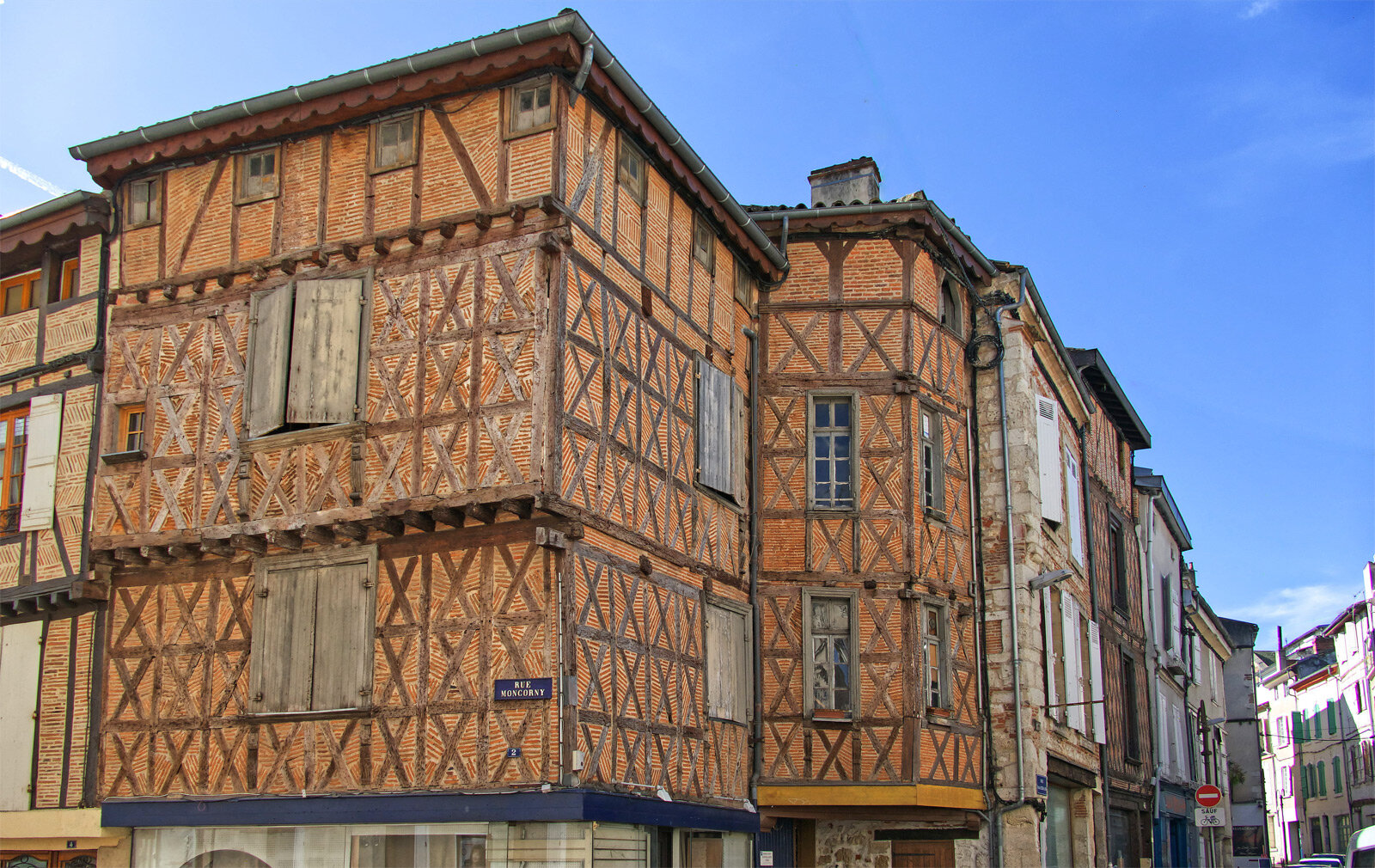

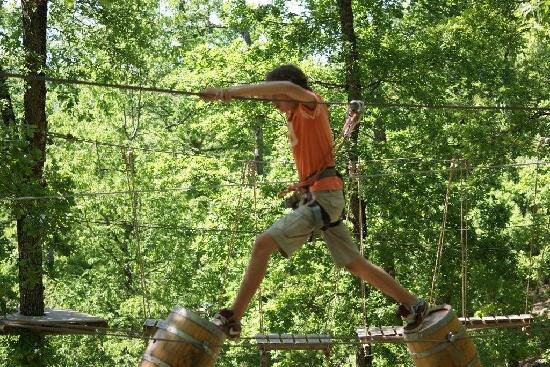
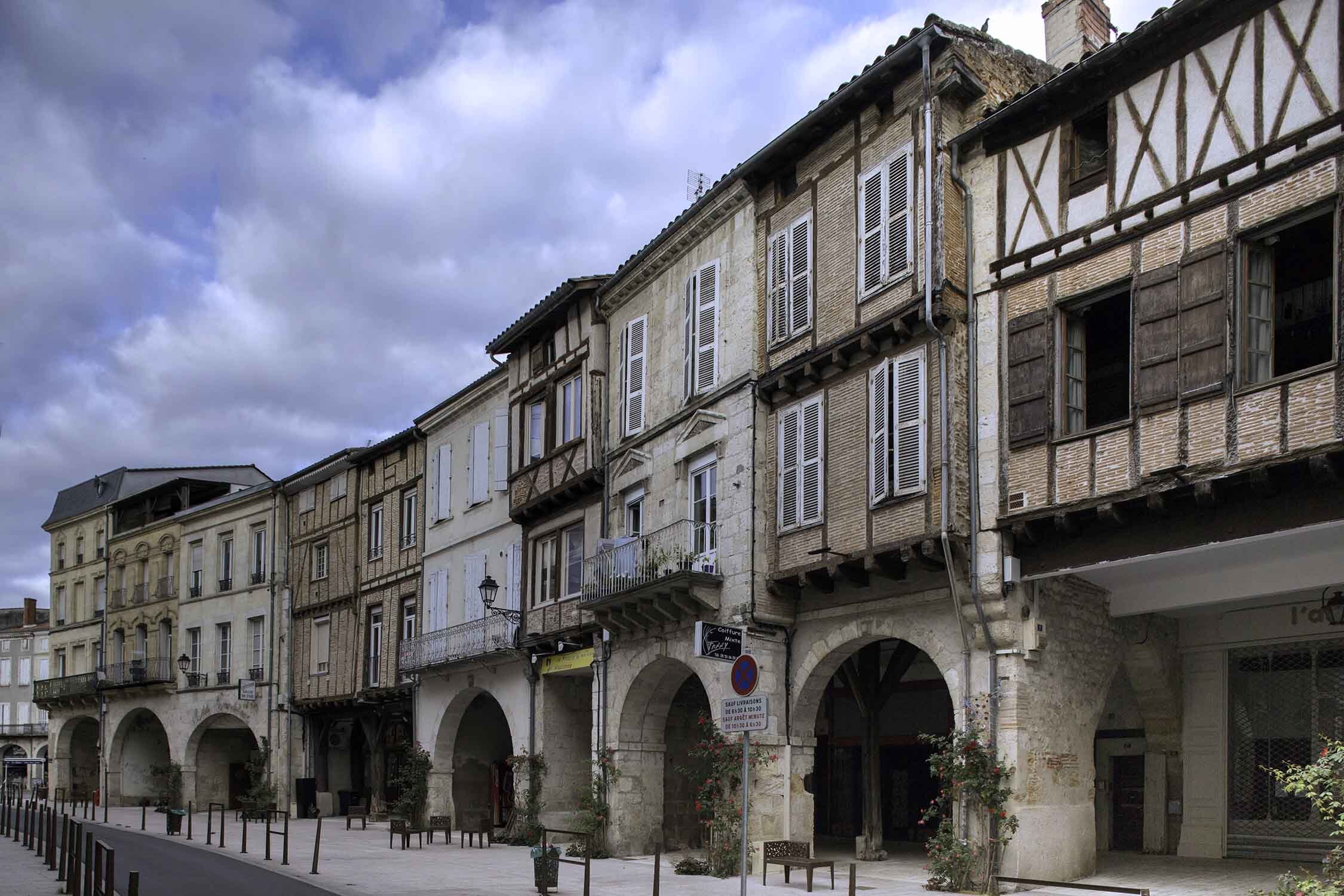
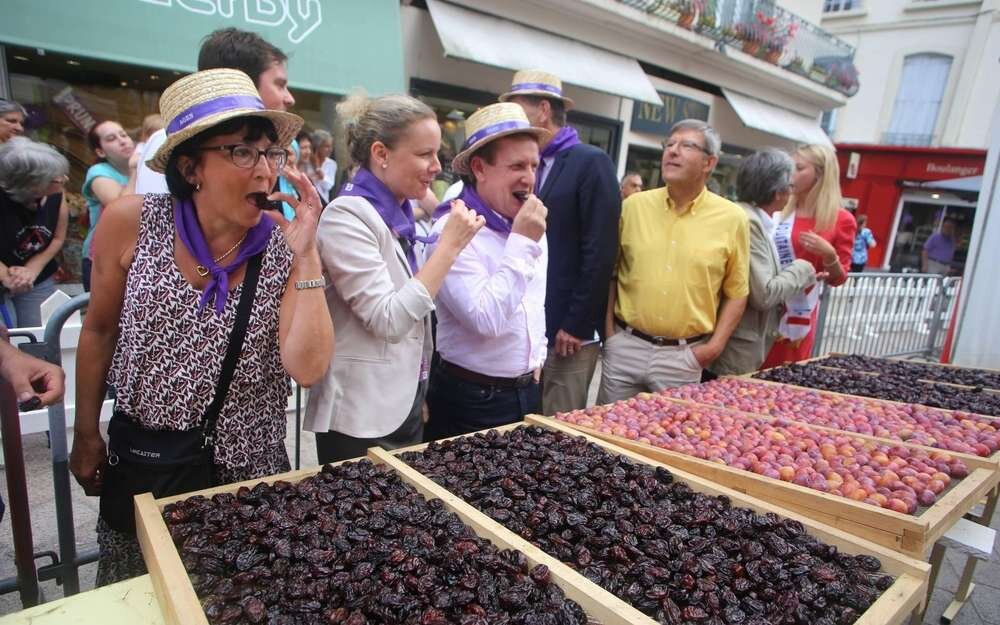
l’Agenais
Agen is funnily enough in the area of l’Agenais, and the capital of the region. Its history dates back the 2nd century BC under the name of Aginnum. Guided tours are available to help you discover the history and architecture, art and monuments of Agen, or explore the area at your own pace with the help of a free edetours app.
Just outside the city centre you will find it’s much photographed canal bridge, one of the largest in Europe, where you can enjoy a walk, or a cycle on the towpath. It is also the prune capital of France, with 1500 prune producers in the region, representing the main industry in the region. You can learn everything about this fruit at the Prune Museum in Granges sur Lot, or perhaps join the festival fun at the annual fetes d’Agen Pruneau Show (normally held in August).
Visit the Musee des Beaux Arts located in the heart of the city in four renaissance mansions where paintings, sculptures, furniture and pottery from the 16th – 20th century is on show, as well as a collection of Spanish works from the 18th – 19th centuries. website
The covered market of Agen at Place Jean-Baptiste Durand is every Tuesday and Sunday or, Avenue du Général de Gaulle on Saturday, and Place du Pin on Wednesday and Sunday.
If you’re looking for a family day out then there’s plenty to choose from; Parc Waligator, Aqualand, the Happy Forest for all the little monkeys (!), Laser Games, river sport, Quad bikes or horse riding.
There’s plenty more places to visit in d’Agenais, including Villascopia 4th century thermal baths, Beauville, Astaffort, and Laplume.



d’Albret
With its Gascony identity, l’Albret combines everything that characterises the spirit of the Southwest. A rich land, which Stendhal nicknamed "The French Tuscany".
Before the 12th century, the Albrets had no connection with Nérac, it was owned the monks of the Abbey of Saint-Pierre de Condom who went to find Amanieu II d'Albret and appoint him protector of the lands of Nérac in 1130-1143. The monks will rule Nérac for two centuries but before the rise of the Albrets, the monks are forced to cede their rights and lands of Nérac to Amanieu VI, first Albret lord of Nérac in 1306. The Albrets and Nérac are now linked and give their name to our lands, the Pays d'Albret, erected in Duchy by the King of France Henri II in 1556. The kingdom reached its peak when the local idol, a prince named Henri de Navarre will accede by game of succession to the throne of France… Henri IV of course!
There are 33 villages in l’Albret and as with the other territories there is plenty to see and do, so we’ll start off with Le Moulin des Tours de Barbaste et son pont roman. Built between the 12th and 14th centuries, the Mill of the Towers of Barbaste and its Romanesque bridge were once the property of Henry of Navarre, the future Henry IV. Discover this exceptional site in the footsteps of the most popular king of France, who signed certain letters: "Henri, the miller of the towers of Barbaste"! Last year saw the doors open for visitors to discover the 800-year history of this medieval site.
In the same village the park of accrobranche and outdoor activities “Cap Cauderoue” offers you a multitude of activities to have fun in group or in family. Whether it's tree climbing, horseback riding, mountain biking or canoeing, Cap Cauderoue is a perfect leisure park for those who are looking for sporting activities or just enjoy the beauty of a natural setting.
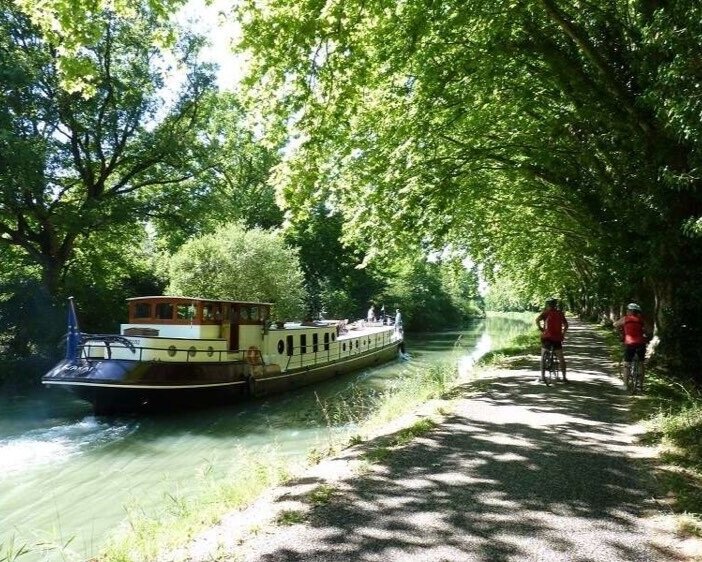
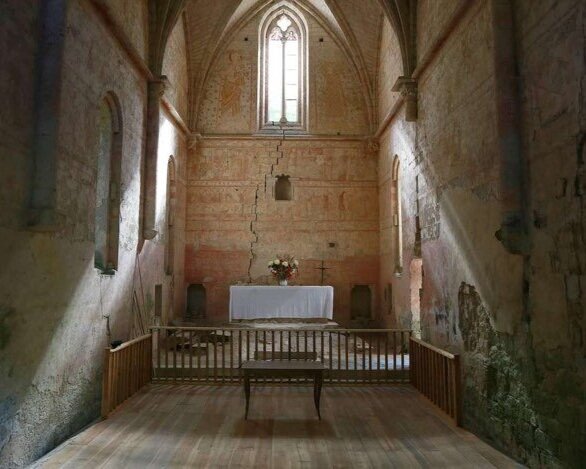

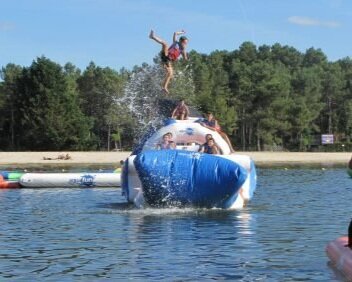
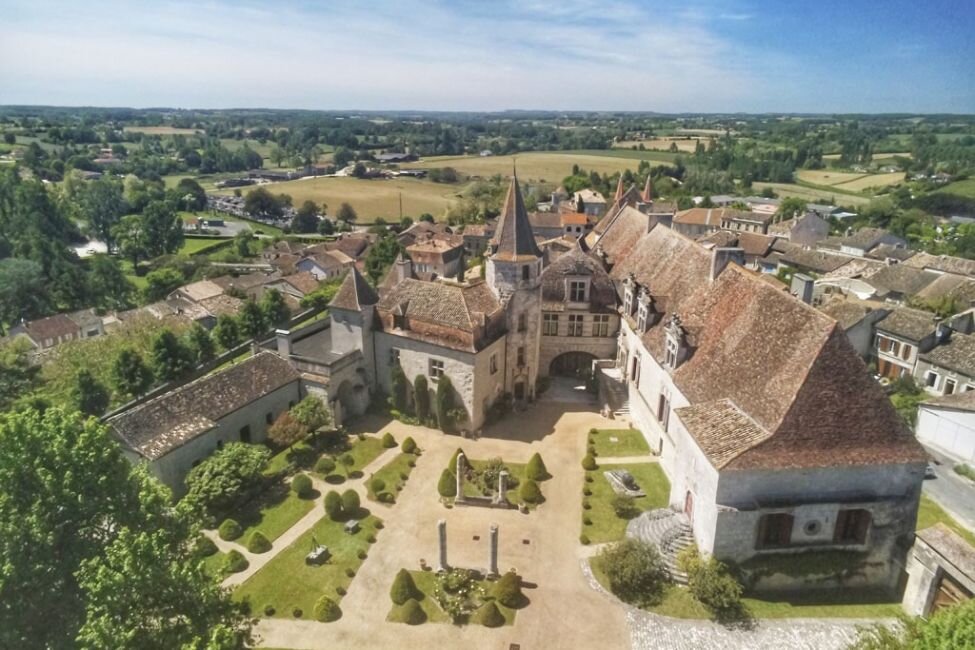
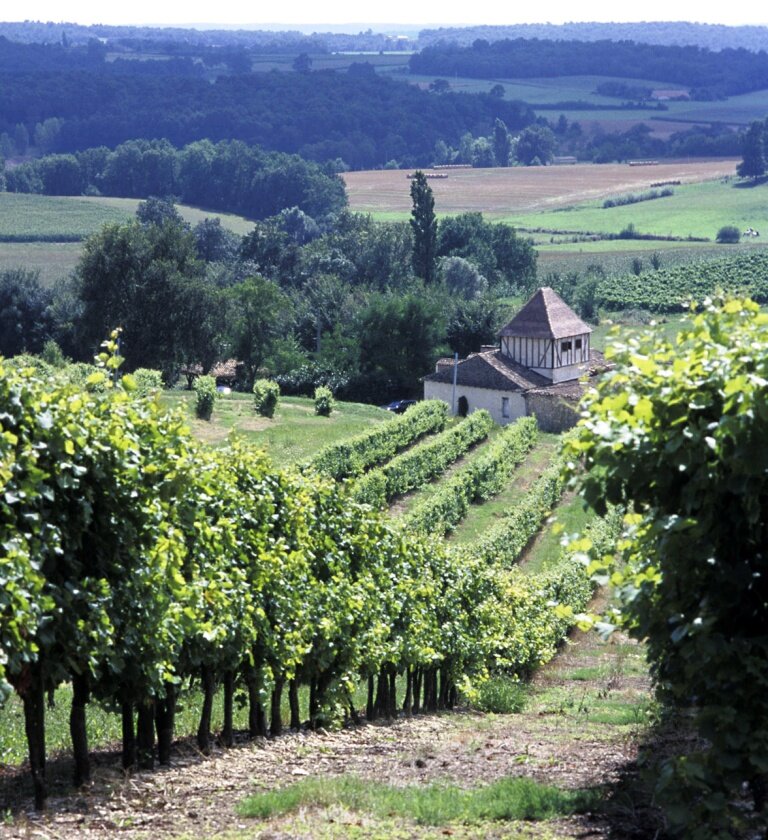
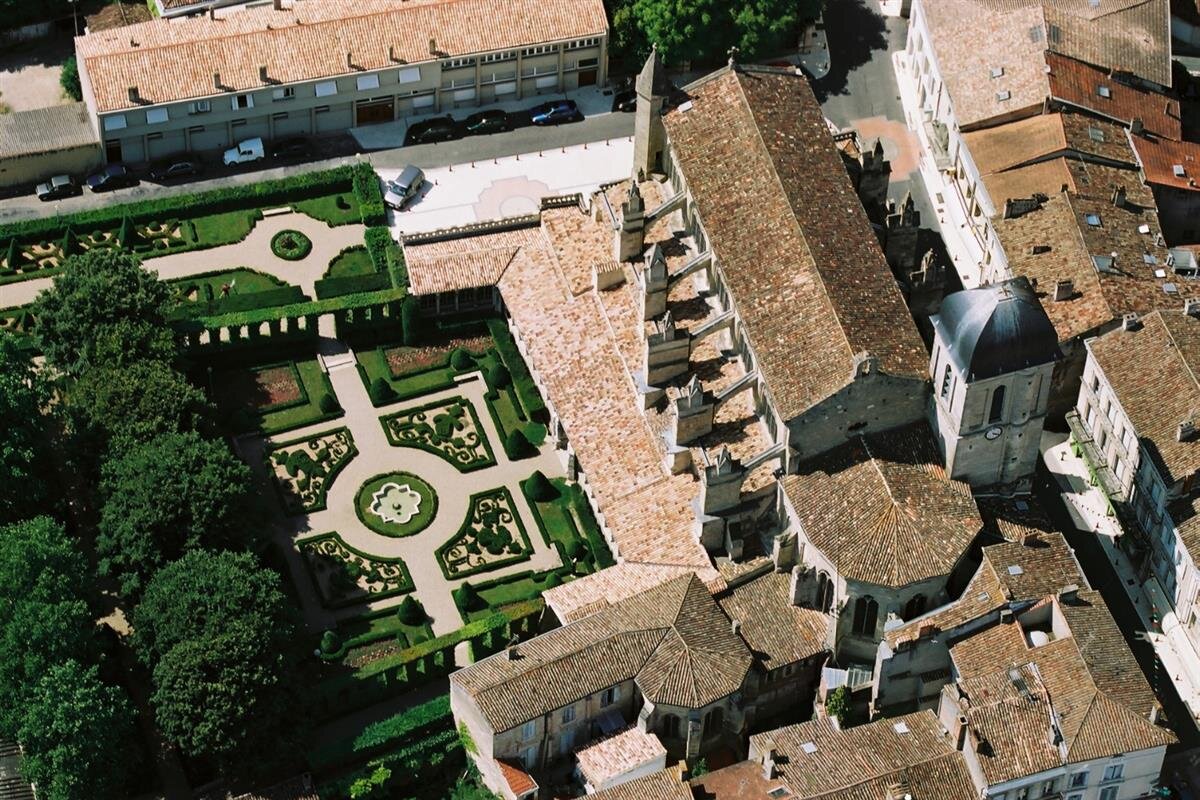
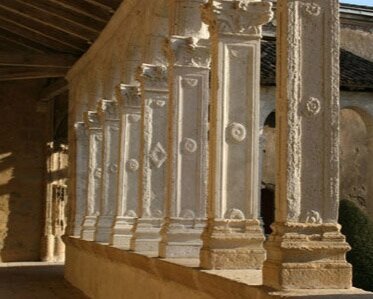
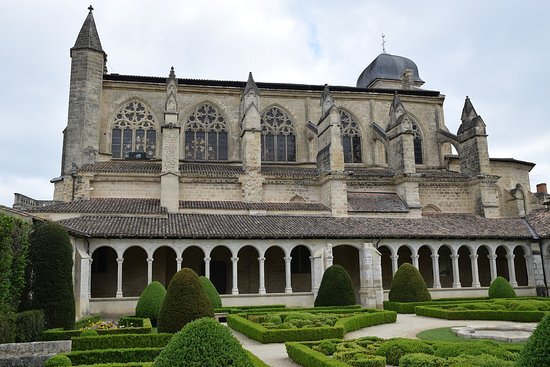
Val de Garonne Gascogne
Our final territory of Lot et Garonne has four areas and share three borders. Gascony, in the south, shares a piece of the Landes forest. The Val de Garonne, to the west, navigates between its proud Gascon identity and its attraction to Bordeaux. North of the Garonne, Duras and Lauzun, has common history with the neighboring Gironde and Périgord.
Pays de Duras is where you will find Labarthe. The area meets the borders of the Gironde and the wine terrain of Bordeaux, in fact there are vineyards where the rows have split classification, some Bordeaux and some Pays de Duras! The Cotes de Duras wine meets Bergerac terrain, and in 2014 they combined forces becoming Vins de Bergerac Duras. You’ll find 900 winemakers in this terrain, and with a selection of wine routes, tours, or a visit to Maison du Vin, you’re sure to find a wine for every taste. Pays du Lauzan starts a short distance from Duras in Allemans du Dropt, and stretches over to the village of Lauzan where you can take a tour the Chateau, home of the first Duke of Lauzun Antonin Nompar de Caumont (1632-1723). Regular exhibitions are held in the chateau and its gardens.
Val de Garonne to the South of Duras is where you’ll find the town of Marmande, probably best known for the Marmande tomato. Marmande has a long history and its foundation dates back 1182 granted by Richard the Lionheart. Visit the cloister, built in 1540, and its courtyard next to the Gothic church of Notre-Dame. In more recent years, Marmande has been hosted to many rock and Jazz concerts.
Head further South and you’ll come to Casteljaloux in the Gascony area, here you’ll find Thermal Spas to enjoy, an 18 hole Golf course, Watersports, and a lot of history to discover. The Lagrange priory ( a private property) in Durance was built by a community of Premonstratensian monks in 1220. Opposite the fortified dwelling, the chapel has an exceptionally well-preserved mural painting decoration dating from the 1340s. Organised tours are available.
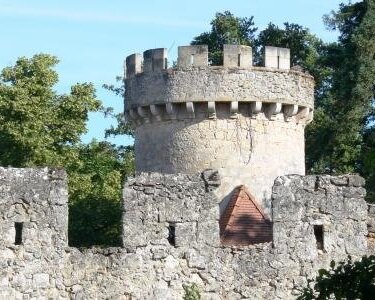
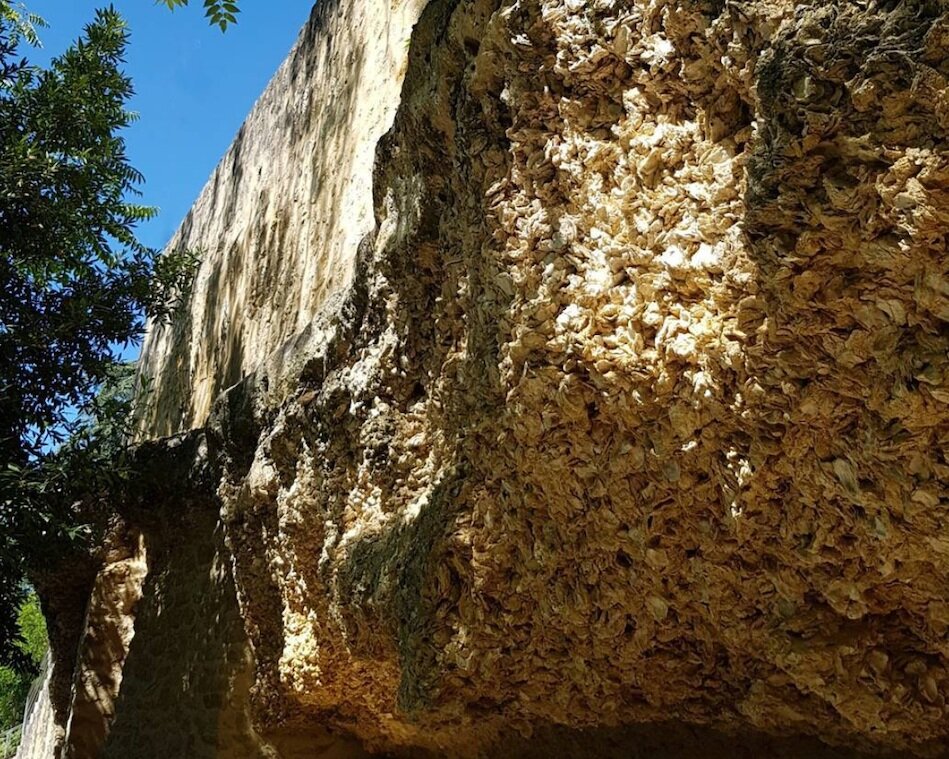
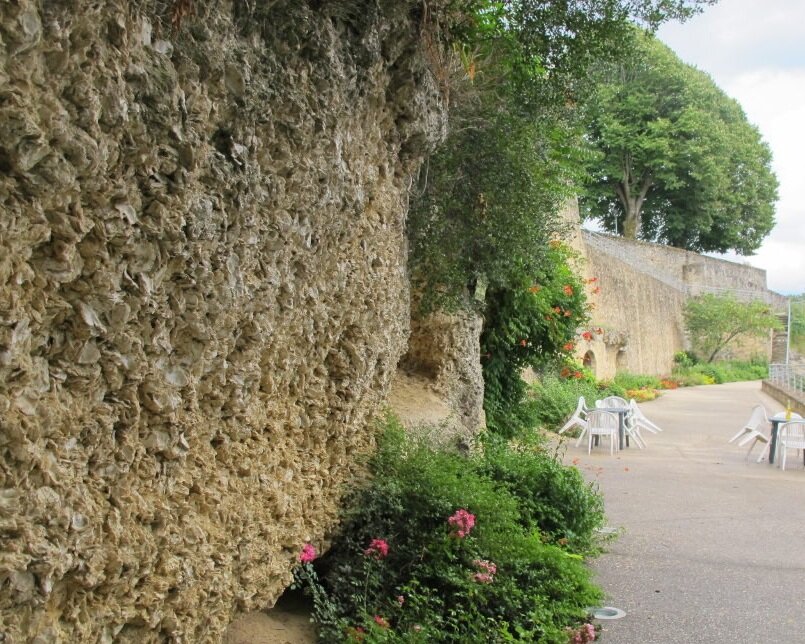



Ste Croix du Mont- Gironde
Just 45 minutes from Labarthe takes you to the parish of Ste Croix du Mont in the Gironde. This small village is steeped in history and is shown on records dating back before the 12th century.
Home to the impressive Château de Tastes, or Château Sainte-Croix, erected during the 14th century, and rebuilt in the late 15th century. There is only a wall with a trefoil opening from this time. The remains of bays and fireplaces confirm the existence in the Middle Ages of a main block, a corps de logis, on the north western side. On the frontage overlooking the plateau, the quadrangular enclosure, with circular towers and protected by moats. Those are the remaining medieval architecture elements.
In 1927, the town hall bought the chateau and built the school three years later. Since the 1970s, the school has been transferred and the town hall has moved into this superb building.
Take a walk along the river front and you’ll find a unique geological site unique in France made up of oyster fossils. The fossils are 22 million years old, and were piled up deep into the sea during the tertiary era. The erosion and withdraw of water created caves, used today for wine tasting, and from the caves you can enjoy a beautiful panorama of the Sauternes region.
The primitive church, with a single nave, is Romanesque and also dates from the 12th century. Girard de Tastes had a first chapel added. From this period, only the portal, classified as a historical monument, and the remarkable figure of the rope pullers remain.
In the 19th century, the church underwent, like many other buildings in the Gironde, a rehabilitation with a Gothic-inspired bell tower, as well as the interior, which however presents some older paintings.
If you are a keen walker then there is a 10km walk around this village that takes in all of the above and also a few vineyards along the way. Visit http://www.sainte-croix-du-mont.fr/ for more information and opening times.


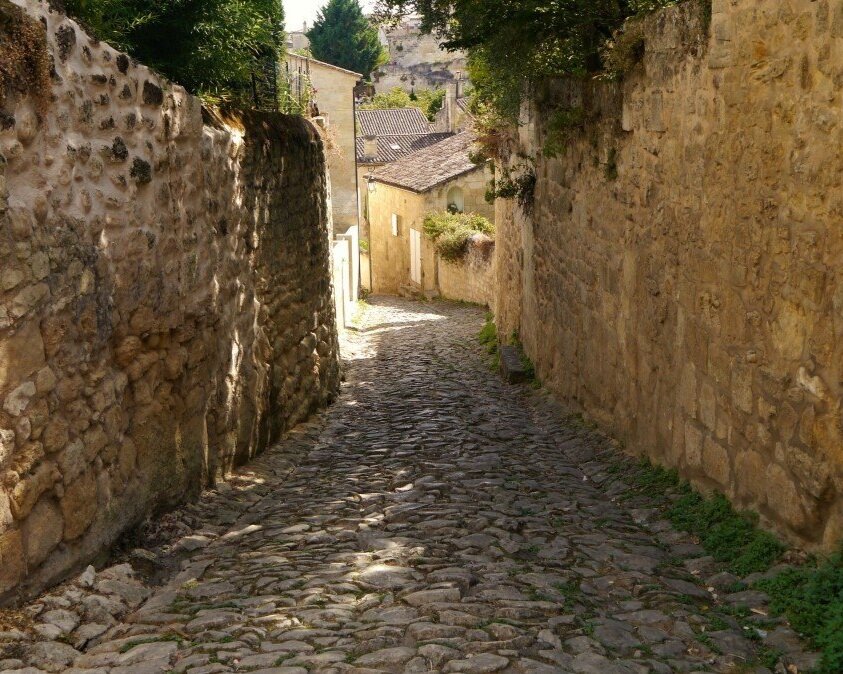
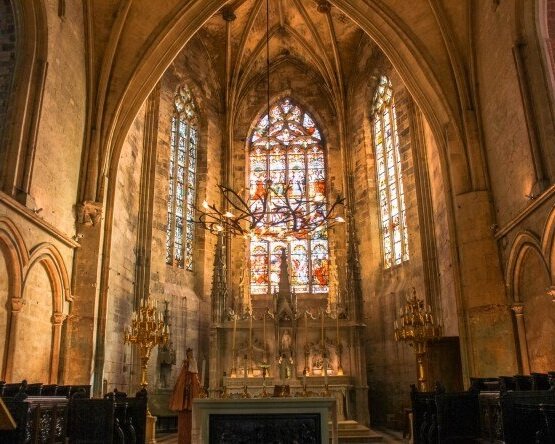
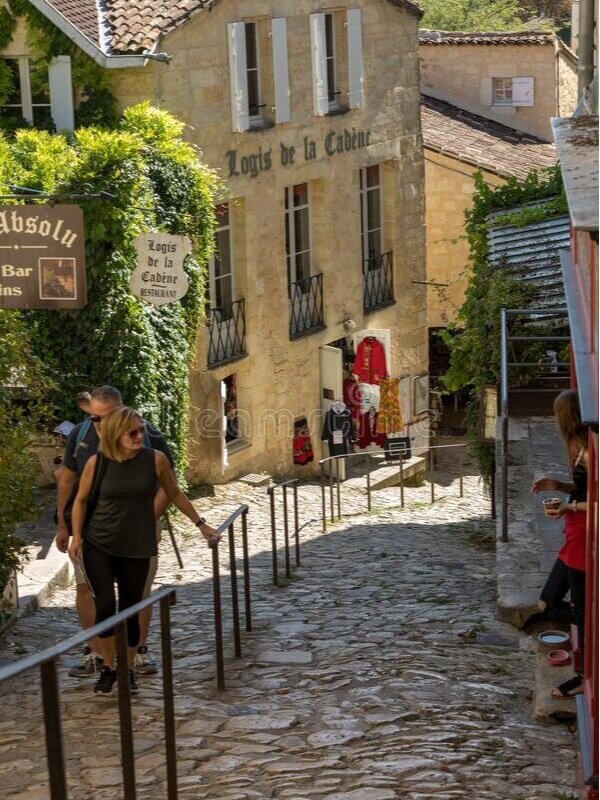


Saint Emilion - Gironde
One of my favorite villages to visit is the UNESCO listed Saint Emilion. Famous for it’s wine but also steeped in history.
Home to the largest monolithic church in Europe, The Cordeliers Cloister, The Kings Keep, The Cardinal Palace, are just a few monuments to visit. The streets of St Emilion are steep and cobbled, so a good pair of walking shoes are advised. Interestingly the cobbles came from the England when English people used little cobblestones to ballast their boats. Once they arrived in Aquitaine, the stones where removed, left there and replaced by wine barrels.
There are plenty of tours to choose from, with or without wine tasting, by electric bike or even a Segway! . Head to the Tourist Office in the centre of Saint Emilion or visit their website to book a tour in advance.
Music and art festivals are also part of the culture scene, and just 10 minutes away in Castilion la Bateille, every summer The "Battle of Castillon" evokes, in 1 hour 30, the English Aquitaine and the final battle fought at Castillon, between the Anglo-Aquitaine forces and the French army of Charles VII. 400 volunteer actors and 50 riders set themselves on stage to create a grandiose show at the foot of Château de Castegens in Belvès-de-Castillon on a 7-hectare stage, 3 kilometers from the historic battlefield. It takes the public in an intense medieval epic history, in the heart of the history of the reign of Duchess Aliénor, until the last battle of the Hundred Years War on July 17th, 1453. After 300 years of conflict, Guyenne joined the kingdom of France.
Market days are Wednesday and Sunday - from 8am to midday
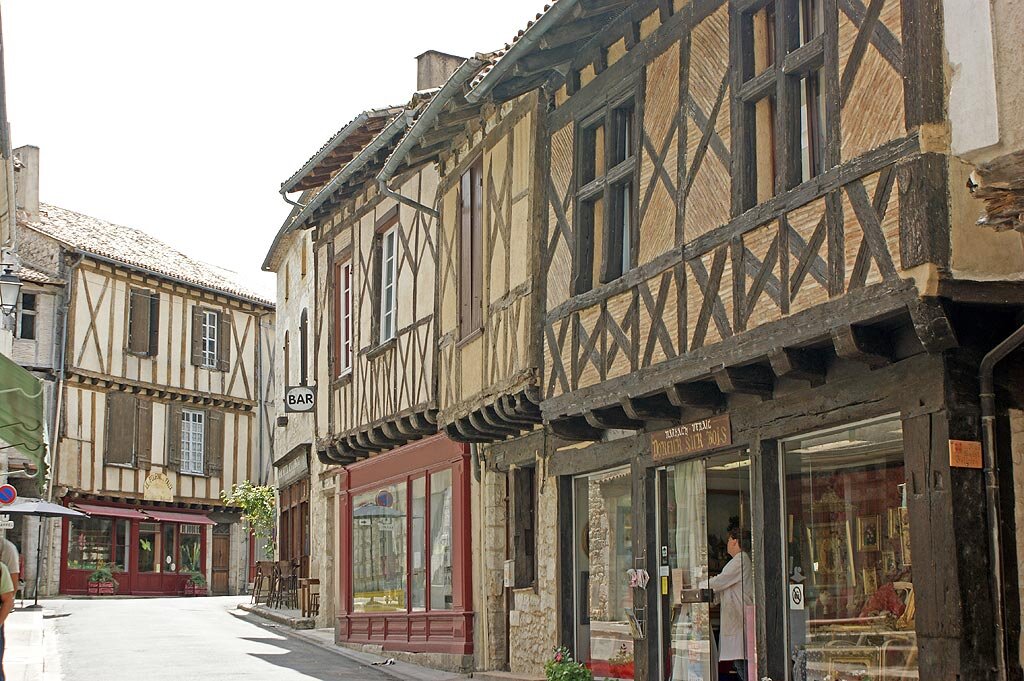
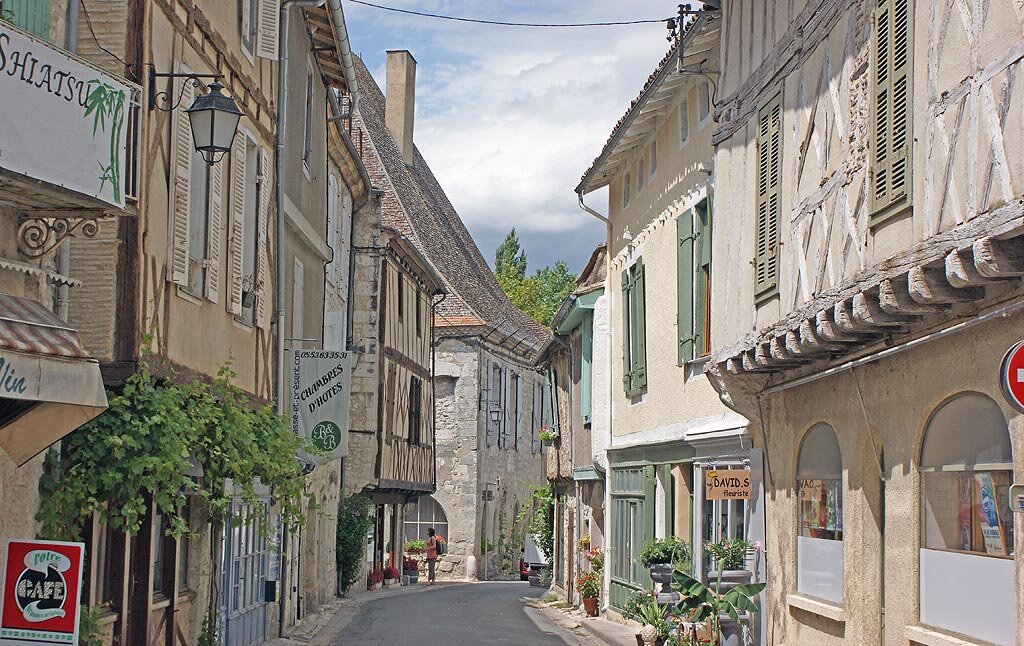
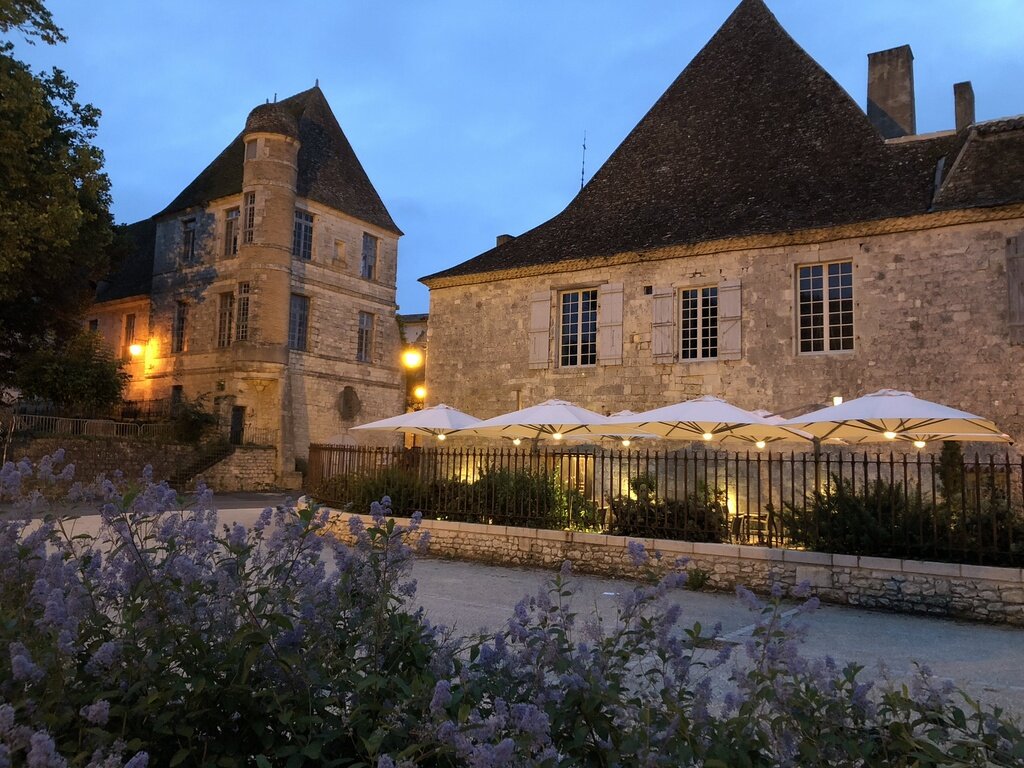
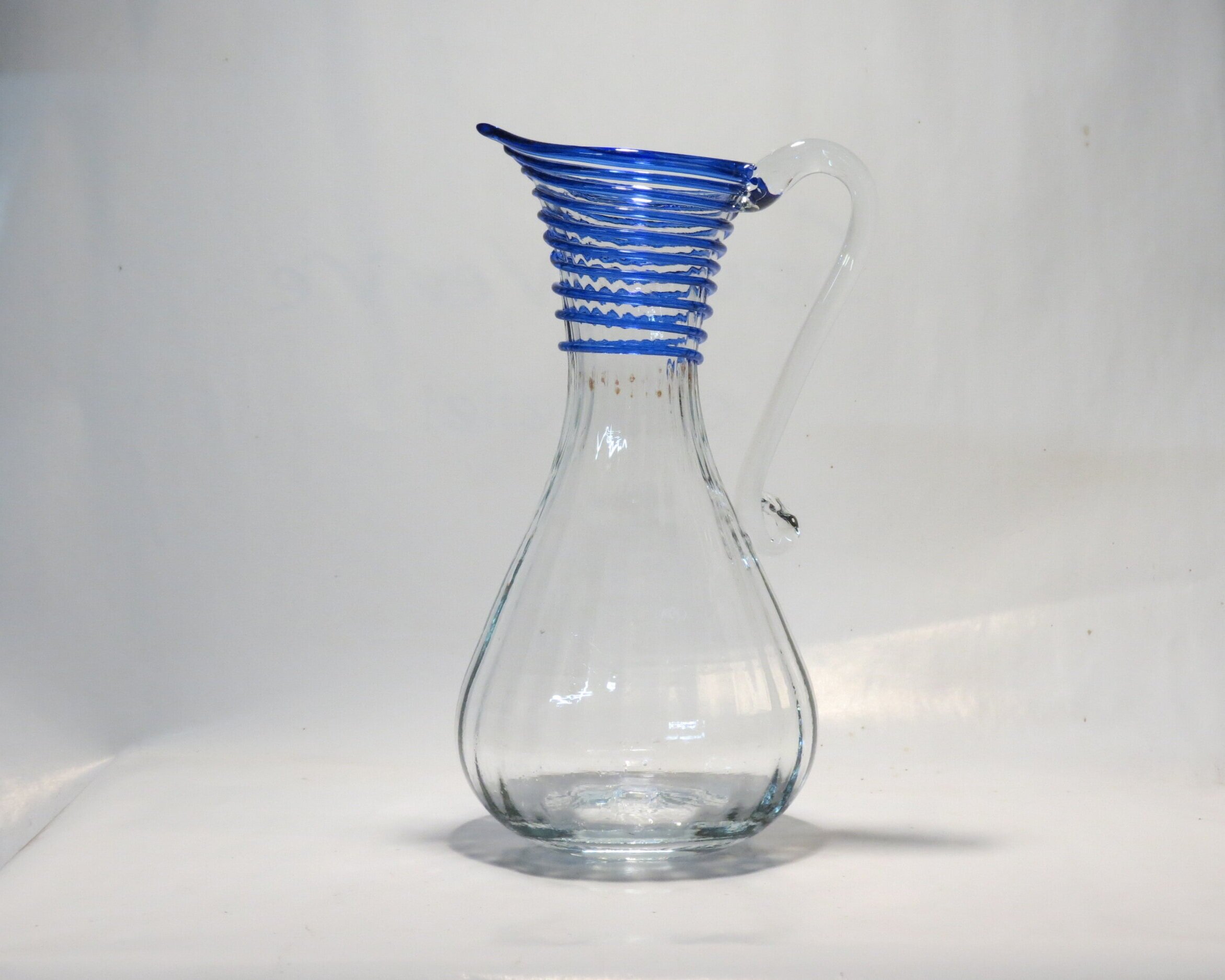
Issigeac - Dordogne
On the borders of Dordogne and Lot and Garonne, Issigeac is the medieval city of Issigeac – well known in this area for the not to be missed Sunday market. Over the years it has built up an incredible reputation. A small-scale activity during winter, it takes on a whole other dimension in summer and virtually covers the whole village. It is a major weekly event in the south of the department.
Issigeac is brimming with history and character, medieval stone houses and unique half-timbered house built in the 14th and 15th centuries. The “Mushroom House” is a highly-original little house, that seems to be in a world of its own here, yet reproduces elegant and subtle style of the timber-frame dwellings. Its corbelled construction, with its overhanging second storey, allowed carts to pass through – now we know!
You’ll also find art shops, brocantes, pottery, and other interesting boutiques to browse, and also plenty of restaurants – must be booked in advance for Sunday’s, cafes, and tea shops.
On the outskirts of Issigeac you’ll find Frédéric Guillot, a glassblower. He creates utilitarian pieces (carafes, vases, glasses) but also jewels, sculptures and unique pieces (glass blowing with a cane). Repair and restoration of ancient objects and Roman reproductions.
